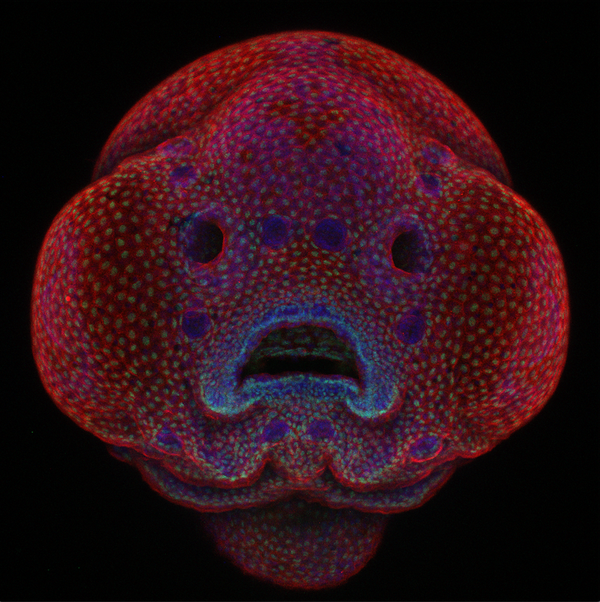Centuries after its invention, the microscope continues to prove that it is not only crucial to science but can also produce works of art—a feat acknowledged each year by the Nikon Small World Award, a competition in which the famous photographic brand recognizes what judges consider the most interesting and beautiful scientific images.
Microscopic pictures of an insect, a 273 million-year-old rock and a culture of human neurons are among the 2016 winners. “Each of these images evoked a powerful reaction of wonder, tenderness or discomfort in the judges. This is where the connection between art and science, the emotional and the technical lies,” says Eric Flem, communications manager of Nikon Instruments.
Oscar Ruiz, an Mexican-American scientist at the University of Texas M. D. Anderson Cancer Center in Houston, was the first-place winner this year with a photograph showing a zebra fish embryo at four days of gestation. Ruiz, who specializes in the genetic mutations that cause cleft lip and palate, is working on a study to explain how these physical abnormalities develop during pregnancy. To explore this issue the researcher uses zebra fish, whose transparent embryos offer almost perfect visualization of internal processes. His winning image involved one of these subjects, and there is more to it than visual beauty. The observational techniques Ruiz created make it possible to see how an embryo changes in real time. “It is something with high scientific value because it has not been done before with the cleft lip,” he says.
On supporting science journalism
If you're enjoying this article, consider supporting our award-winning journalism by subscribing. By purchasing a subscription you are helping to ensure the future of impactful stories about the discoveries and ideas shaping our world today.
Ruiz was thrilled to take the top spot in in the photo competition—organizers say judges reviewed 2,000 images from 70 countries. “This motivates me to keep working even more. Images like this help us to find the exact moment when the problem occurs, and then provide the basis for a solution,” Ruiz says.
According to tradition, the images will be compiled in a calendar that is distributed among laboratories around the world. “I collected this calendar for years,” Ruiz quips. “Knowing that my image will now be there is priceless.”
